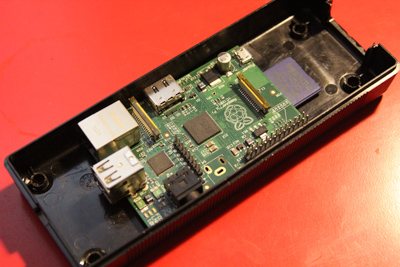

- #Autossh reverse tunnel raspberry pi how to
- #Autossh reverse tunnel raspberry pi password
- #Autossh reverse tunnel raspberry pi free
Then I created two CNAME records, pointing to the above subdomain: and. I created a subdomain u1. with its A record pointing to the above static IP address. I bought a cheap 2GB RAM, 20GB disk VM + a 25GB volume on Hetzner for about 4 EUR/month.
#Autossh reverse tunnel raspberry pi free
ngrok would work but the free plan is too restrictive. Dynamic DNS wasn't an option because my ISP blocks all incoming traffic. I wanted to be able to access these apps from public Internet. Perpetually at home in headless mode (just needs 5W power and wireless internet). I wanted to be able to run some webapps on my Raspberry Pi 4B running HackerNews discussed this with many alternative solutions: After running the above command, you will see a message similar to the one below. cloudflared tunnel create TUNNELNAME Copy. Ensure you replace TUNNELNAME with the name you want to assign this tunnel.

#Autossh reverse tunnel raspberry pi how to
Having trouble ssh’ing to your Ras Pi under any conditions? This article explains how to get past one common cause of this problem.Raspberry Pi on Internet via reverse SSH tunnel Now that we are authorized, we can create a Cloudflare tunnel by using the following command. If I find a way to extend that I’ll revise this post. Exercise caution, though, as you are opening up your Home network as well.Ĭurrently the tunnel doesn’t stay up for very long – perhaps an hour or so. You can use your Raspberry Pi to create a reverse tunnel tht allows you to access it from anywhere, assuming you have a cooperating hosted server on the Internet as a mutual meeting point for the ssh sessions. You’re potentially exposing your whole home network in creating a reverse tunnel like this so you really have to be careful. Make sure you modify the default passwords to your Pi before attempting this. With these settings my reverse tunnel has been up all day. Make sure you don’t have these mentioned a second time in that file. This goes into the /etc/ssh/sshd_config file. It didn’t help when I put them on my Amazon server. That same web page I cited above has the necessary settings.

*Except that in my experience the reverse tunnel does not stay! It’s staying up less than two hours.
#Autossh reverse tunnel raspberry pi password
> ssh −p 10000 it! You should be logged on after supplying the password to the pi account. Now to access your Pi from “anywhere,” log into your server like usual, then from that session, login to your Pi thusly: > ssh −f −N −R 10000:localhost:22 can even log out of your Pi now – this reverse tunnel will stay*. So I’m not going to talk about that method.įrom that session ssh to your hosted server using syntax like this: I find this easier and probably more secure than opening up ssh (inbound) on your home router and mapping that to the Pi. What you can do is to create a reverse ssh tunnel. My only contribution is in realizing that the Pi makes a good platform to do this sort of thing with if you are running it as a server like I am. I just copied what I saw in another post. 4.9 Keep alive 4.10 Automatically restart SSH tunnels with systemd 4.11 Autossh. I can’t really take any credit for originality here. tunnel on a Raspberry Pi (or any other Debian/Ubuntu device).

This is the same assumption I used in describing the power monitor application. I eventually realized that the Pi could be accessed from anywhere, with one big assumption: that you have your own hosted server somewhere on the Internet that you can ssh to from anywhere. There’s this post on setting it up without a monitor, keyboard or mouse, and this post on using it to monitor power and Internet connection at my home. I’ve done a couple things with my Raspberry Pi. Editor’s 2017 note: Lots of great alternatives are discussed in the Comments section.


 0 kommentar(er)
0 kommentar(er)
